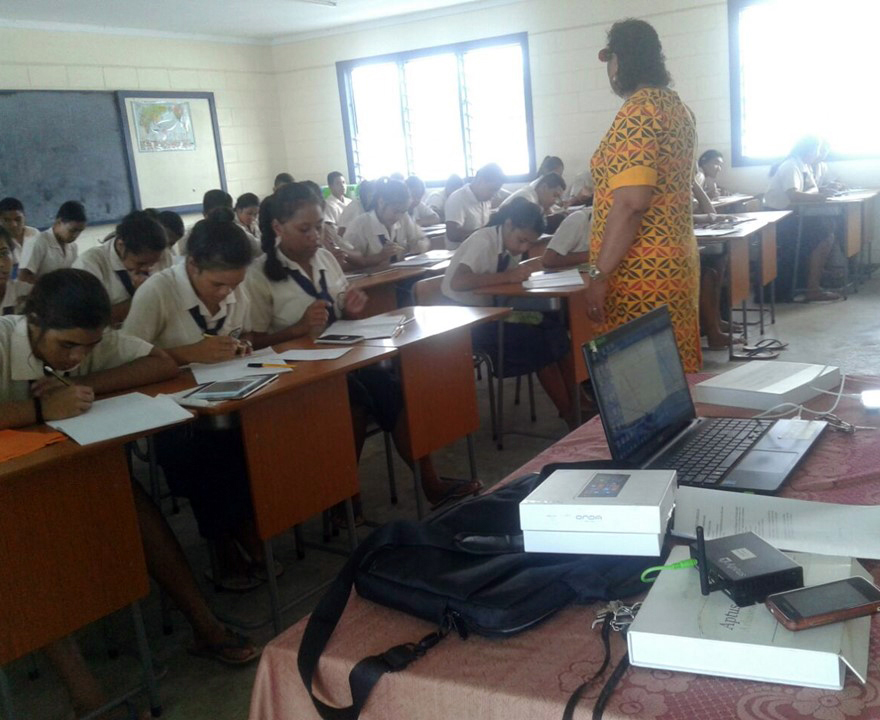
The National University of Samoa (NUS), the Commonwealth of Learning (COL) and the Samoa Ministry of Education, Sports and Culture collaborated on a research project to study the impact of COL’s technology Aptus in primary, secondary and higher education environments. Aptus[SM1] is essentially an off-grid, offline virtual classroom – a classroom without walls.
Fifteen Aptus sets were sent to Samoa in the summer of 2016 for a two-phased study. Phase one involved four tutors and a total of 223 students enrolled in a foundation course on computer studies at NUS. At NUS, most students only have access to the public computers in the library. Aptus was expected to increase the reach of library materials, since it could be deployed in classrooms with a large amount of digital resources loaded on it. Students brought their own devices to their tutorial classes, such as laptops, smartphones or tablets, or were supplied with them, and then connected to Aptus. The main purpose of the study was to assess how useful Aptus was as a source of digital learning materials.
 Phase two trials involved 164 students in selected primary and secondary schools within the urban area and was used to teach english and math.
Phase two trials involved 164 students in selected primary and secondary schools within the urban area and was used to teach english and math.
The researchers collected data and surveyed the students. According to the research team, “the survey indicated very positive perceptions of staff and students [related] to the usefulness and ease of use of the Aptus.” Tutors were enthusiastic and requested their own personal Aptus devices. The research team termed the possibilities offered by Aptus as a “monumental breakthrough.”
The research team was led by Dr Ioana Chan Mow, Associate Professor of Computing and Computer Education at the National University of Samoa. Dr Emma Kruse Va’ai, former Deputy Vice Chancellor of NUS and a member of COL’s Governing Board, had facilitated the initial contacts between COL and the research team.
An evaluation report on the “Usefulness and Ease of Use of the Aptus Within the Samoan Education Context” and presentation slides on the deployment project can be found on COL’s Open Access Repository.
Photos courtesy of the National University of Samoa.


